Our Most Popular and Powerful Water Power Moments From 2022
Over the Last Year, Our Readers—and Viewers—Loved To Learn About the New Tools and Technologies Our Experts Created
Sometimes, climate change can seem like such a daunting and insurmountable challenge that even reading about seemingly small (but terrifying) temperature shifts, unusual weather patterns, or shrinking water supplies can feel, well, exhausting.
That is why we try to offer good news, in bite-sized nuggets, that show just a few of the many solutions our National Renewable Energy Laboratory (NREL) experts are coming up with year after year. Based on our audience data, readers like you seem to like it.
So, in case you missed a juicy nugget, we have tallied up the most popular events, news stories, and videos published over the last year.
Climate change may feel overwhelming, but we have the people—and the water-powered technologies—to help build a carbon-free electricity grid by 2035 and win the fight, one carbon molecule at a time.
January 2022
In January 2022, we counted down 10 significant water power accomplishments from 2021, which included a map of Alaska’s energetic Cook Inlet (learn more in this video), resources to inspire the next generation of water power workers, and ideas to help design more productive, environmentally friendly hydropower technologies.
We gathered video footage to create a huge, virtual 360-degree tour of NREL’s water power facilities. Now, you can explore NREL’s Flatirons Campus from the comfort of wherever you work nowadays, whether that is your home office, a local coffee shop, or a commuter train.
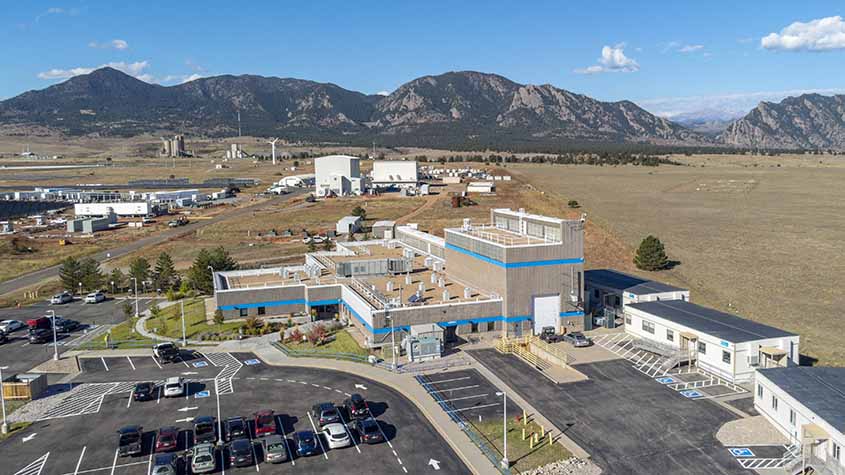
February 2022
NREL Mechanical Engineer Nathan Tom helped design a new kind of wave energy technology that could be cheaper, produce more energy, and brave the ocean’s brawn better and for longer. Called a variable-geometry, oscillating, surge wave energy converter, the device creates windows that allow waves to pass through without crashing full force onto its hull.
During a U.S. Senate committee hearing on Capitol Hill in Washington, D.C., policymakers cited NREL’s hydropower research, which helped inform discussions about the renewable’s huge value to the United States’ energy system.
March 2022
With a freshly updated Marine and Hydrokinetic Toolkit—a searchable, open-source code library—marine energy developers can now access even more data on U.S. ocean and river sites and analyze how well their technologies might perform in different conditions related to turbulence, sediment, extreme waves, and more.
On a sunny winter day, a team of NREL researchers visited Jennette’s Pier at North Carolina’s Nags Head beach to deploy their novel wave-powered desalination device. “Getting to this point has required a lot of patience and perseverance, but that's part of developing new renewable marine energy technologies,” said Scott Jenne, NREL’s marine energy systems engineering and techno-economic lead and principal investigator for the U.S. Department of Energy’s (DOE's) Waves to Water Prize.
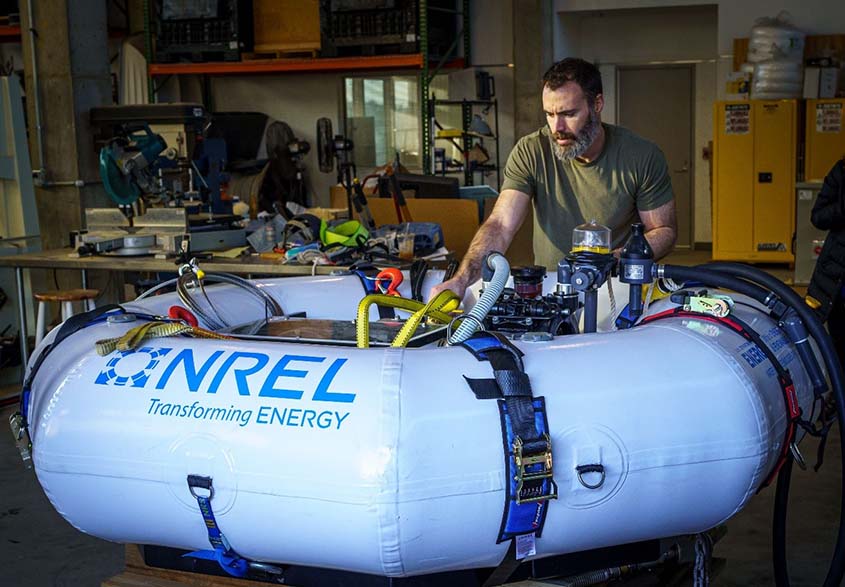
Rebecca Fao, a mechanical engineer at NREL, hosted the two-day 2022 Marine Energy Data and Instrumentation workshop for industry, university, and laboratory experts. Participants helped identify what the marine energy industry needed to collect better data on their technology prototypes.
April 2022
For Earth Day, NREL celebrated DOE’s many prize competitions, which encourage teams from academia, industry, and startups to compete to design improved technologies for solar energy, water power, green buildings, and more.
The Waves to Water Prize—a competition designed to accelerate the development of small, modular, wave-energy-powered desalination systems—announced its grand prize winner and celebrated the finale of its final stage, DRINK.
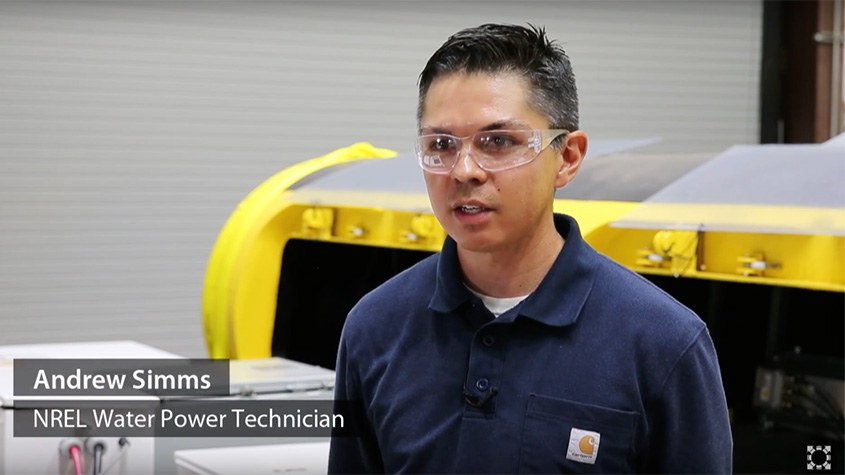
In another Earth Day celebration, we presented three ways NREL’s water power researchers are investing in tomorrow’s cleaner world—and how you can, too. Our experts are, for example, helping reduce plastic pollution, save water (and energy along with it), and build more resilient communities.
May 2022
NREL got in the water with SHARKS—no, not the predatory ocean hunters but rather a few of the novel technologies that have the potential to turn tides and river currents into affordable sources of renewable energy.
“And one more thing!” said a young Aaron Levine when negotiating for a shiny new toy, a different dinner, or a later bedtime. Now, Levine, a senior legal and regulatory analyst at NREL, focuses on how to add more safe, reliable hydropower to the U.S. electrical grid and, in doing so, fight climate change.
June 2022
A team of NREL researchers including Stuart Cohen mapped out how, where, and at what cost U.S. developers could build new pumped storage hydropower facilities, which could help store enough clean energy to support a future carbon-free electricity grid.

Twelve remote and island communities joined the journey to energy resilience thanks to the Energy Transitions Initiative Partnership Project, which assists communities in transforming their energy systems to include hydropower, marine energy, or other renewable energy technologies and resources.
July 2022
In a new video, we shared how the NREL water power team is thinking big about hydropower’s role in the fight against climate change. Spoiler alert: Our experts can model any grid in the world to discover how hydropower facilities can best support an evolving clean energy grid.
This month, NREL researchers attended the 2022 HydroVision International Conference in Denver, Colorado, and presented two panels. In one, experts discussed how hydropower and pumped storage hydropower—which can store huge amounts of energy for hours or even days—could support a clean energy grid. And in the second, another group discussed challenges facing the hydropower workforce.
August 2022
In New Hampshire, NREL’s Aidan Bharath, a research engineer, worked to help advance a “living bridge” to clean energy, which could help tidal energy go global. “It’s not very pleasant,” Bharath said of his former job as a welder in the oil sands of northern Canada—one reason why he shifted his attention to renewable marine energy.
And in a second video, we highlighted how NREL is helping marine energy progress toward commercialization. Marine energy has the potential to play a key role in a 100% clean energy future, and NREL researchers are working hard to get us there.
In the summer 2022 issue of The Current, our water power newsletter, readers learned how to take a virtual 360-degree tour of our water power research facilities, find conference recaps and other news, and read about NREL Research Engineer Ritu Treisa Philip’s life on the ocean and on stage.
NREL researchers presented a webinar to explain the Marine Energy Atlas’ many new features on Aug. 30, 2022. The web-based interactive mapping tool now includes wave data going back 42 years as well improved filtering capabilities, the ability to save queries, and tools to process massive amounts of data in house.
September 2022
“The DEEC-Tec domain has legs and is growing,” said Blake Boren in an article about his newly patented wave energy technology, distributed embedded energy converter technologies (or DEEC-Tec, pronounced deck-tech, for short). With DEEC-Tec, individual energy converters work together (like muscle cells) to create a larger, flexible structure (like a sea snake) that can generate energy from even slow-moving waters.
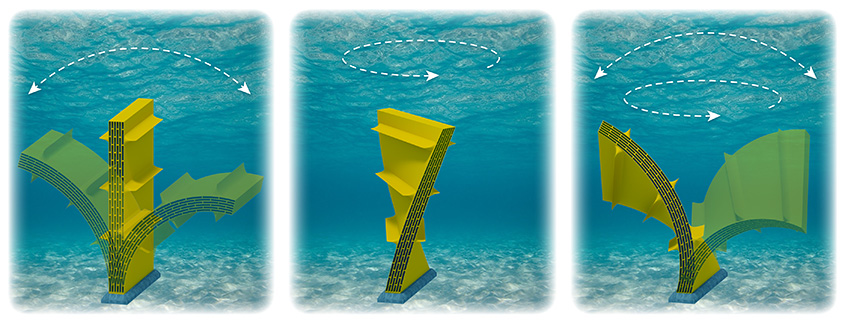
NREL’s customizable data acquisition tools, called Modular Ocean Data Acquisition Systems, are designed to assess marine energy technologies in the lab or in the water. With these systems, our experts (and many more around the world) can quickly and affordably collect data on their early-stage designs. In September, we produced a video to explain how these systems work.
NREL hosted a webinar to share recent updates to the Hydropower Regulatory and Permitting Information Desktop (RAPID) Toolkit, which distills varying federal, state, and tribal requirements for hydropower project development (and much, much more) into one easy-to-use database.
October 2022
For those who missed the 2022 parade of Manufacturing Masterminds, we published a recap of how six experts in renewable energy manufacturing built careers cleaning up greenhouse gases, plastics, and waste with help from child-sized zucchinis, toy plants, rickety power grids, a landfill epiphany, and a wee island with no stoplights. Read more about water power’s Robynne Murray, who is a rebel with a cause—and an ice axe.
NREL researchers released a new analysis tool for people working to design small—or smaller—wave energy converters, which must be designed for different ocean variables than their larger cousins, to accurately assess their performance at sea.
At the 2022 Clean Currents conference, NREL experts joined an international cohort of water power researchers, industry members, and policymakers to discuss new funding and workforce opportunities, the recent pumped storage hydropower craze, hydropower’s keystone role for a 100% clean energy grid, and more.
November 2022
On Nov. 4, 2022, NREL hosted colleagues from the U.S. Bureau of Reclamation and the Western Area Power Administration to discuss potential research partnerships in, for example, analyzing climate change and drought effects for hydropower plant operations, how hydrogen could play a role in the energy-water-food nexus, and the feasibility of floating solar panels on hydropower reservoirs.
NREL researchers released a report on hydropower workforce diversity as well as other workforce gaps the industry will need to fill to help the country achieve the goal of transitioning to a carbon-free electricity sector by 2035.
With a newly updated Portal and Repository for Information on Marine Renewable Energy, everyone—from small startups to big universities—can access the data they need to advance the marine energy industry. “You could have the greatest innovation in the world, but if you keep it to yourself, there’s no value to it,” said Jon Weers, NREL’s lead technologist and data systems architect.
December 2022
In the most recent Beneath the Surface profile, we featured Kerry Strout Grantham, who is negotiating sustainable human growth (and some stinky hikers) while partnering with communities, researchers, and technology developers across the United States.
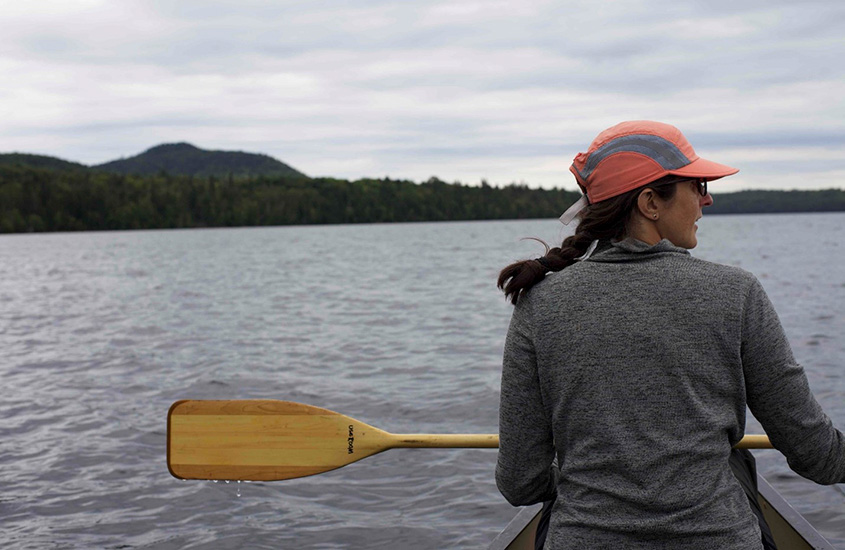
For more of NREL’s biggest 2022 water power accomplishments, browse our library of project successes and the impacts of our research and development. And subscribe to the NREL water power newsletter, The Current, for the latest news on NREL's water power research.
Last Updated May 28, 2025
